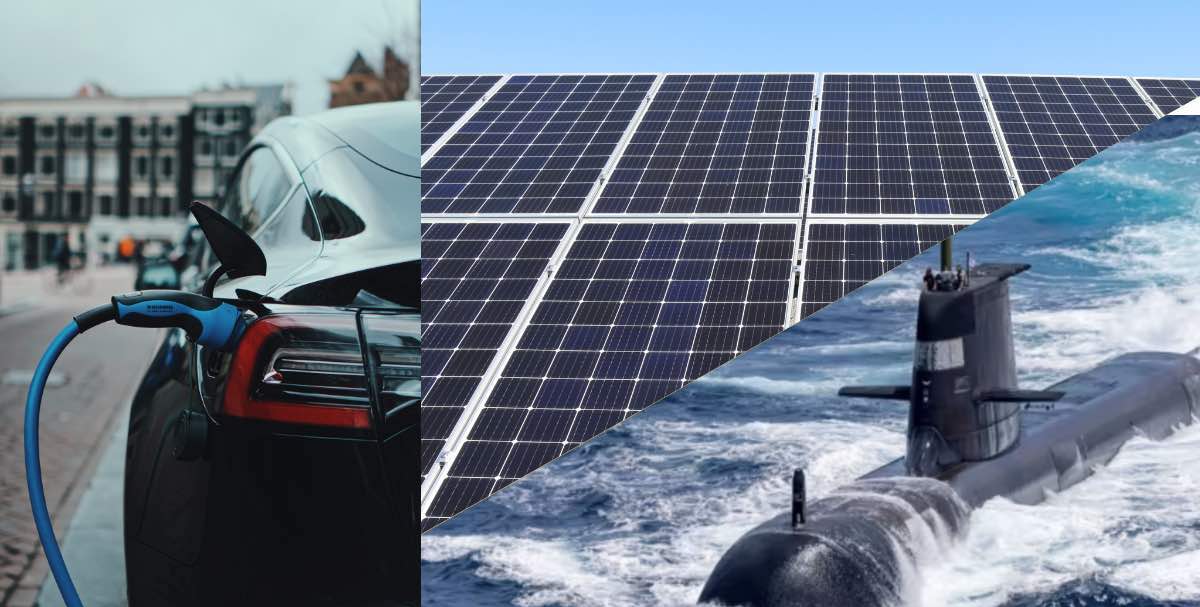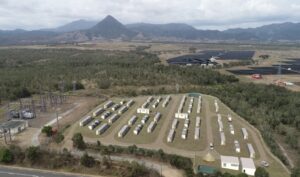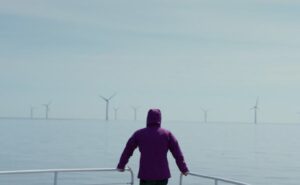Like its $300 billion response to the pandemic, the Australian government’s announcement that it will spend $368 billion on nuclear submarines shows that when there’s a crisis, perceived or real, it has the capacity to respond to the threat with hundreds of billions of dollars.
It’s in moments like these that Australians cock their head to the side and think ‘hang on, why isn’t our government responding at a similar scale to the very real, UN defined “Code Red” climate crisis,’ which is very visibly burning and flooding our magnificent country right before our eyes.
The scale of the climate threat, and the pathways to avoid it, are expected to be underlined this week with the release of the latest climate report from the Intergovernmental Panel on Climate Change (IPCC).
And it won’t be pretty reading, and will confirm climate failure as the number-one risk on a global scale over the next decade.
And given the main justification for the spending on the subs is national security, it’s worth repeating the comments made by Home Affairs Minister Clare O’Neil at the National Press Club on December 8, last year when she said climate change is creating massive movements of people that may become unmanageable.
“Natural disasters already force 21.5 million people from their homes each year. In our region, this – alongside foreseeable food and energy shortages – will be big vulnerabilities we need to work with our neighbours to address,” she said.
“Climate change is creating natural disasters at rolling frequency. For affected citizens, these disasters can be life-shattering. From a security perspective, their management is a hugely consuming exercise for government and the community. This, in itself, is a national security risk.” she said.
National security threats around climate change are increasing
To further underline those points, the increasing risks of geopolitical instability in our region caused by ever increasing, intersecting and cascading crisis driven by global warming have been outlined by members of the Australian Security Leaders Climate Group (ASLCG) for many years now.
“What climate change is doing is attacking the basics of human existence, ” says scientist Ian Dunlop in Home Front, a 2019 short documentary produced to convey the scale of the threat that global warming poses.
“It’s attacking stability in the weather systems, it’s attacking land availability, it’s attacking food supplies. All of these factors come together. When they interact, you end up with an accelerating process where the problems escalate extremely rapidly.”
Matching responses to threats
During his Press Club interview with Laura Tingle last week, former Australian Prime Minister Paul Keating eviscerated the government’s decision to buy a eight submarines worth $368 billion because geography made it virtually impossible for China to invade Australia.
He was also highly critical of recent fear-mongering headlines such as “Red alert: War risk exposed” and “Australia ‘must prepare’ for threat of China war”, particularly a series led by the Nine newspapers in the lead up to the submarine spending reveal.
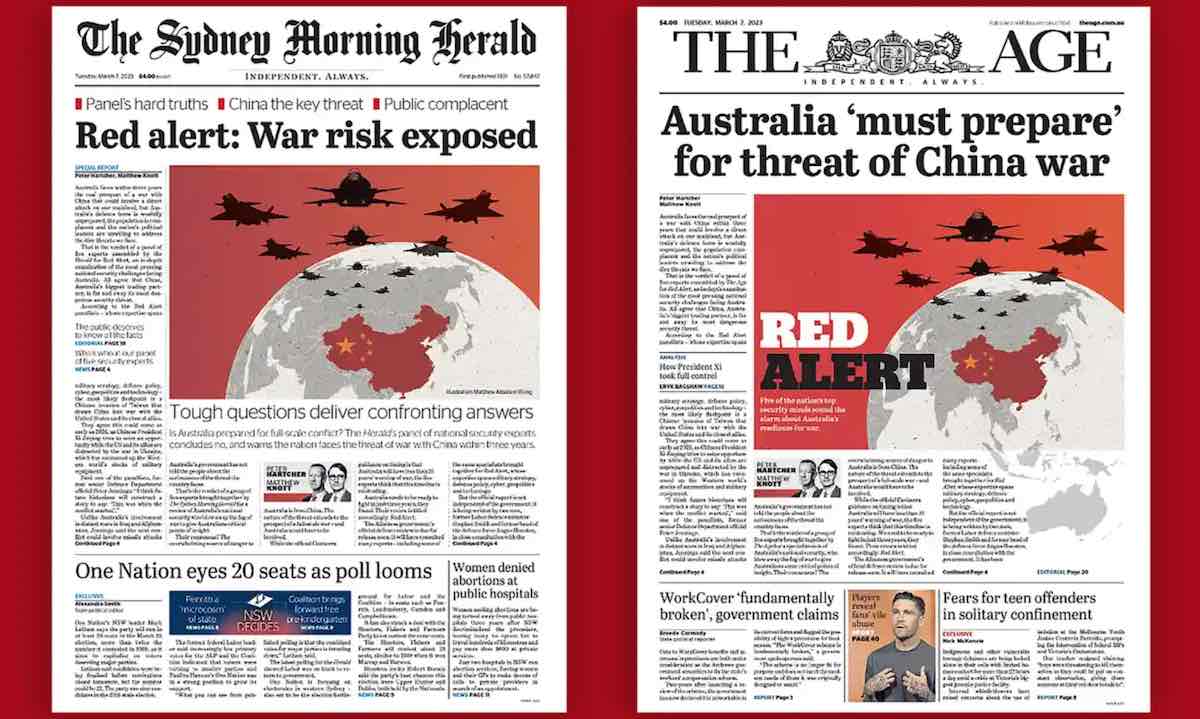
So, if the Australian media defined “threat of China war” red alert, justifies a third of a trillion dollars to be spent on submarines that won’t be commissioned for another decade, what level of spending is justified by the United Nations “Code Red for Humanity” climate report?
If Australia can spend big on threats, why not climate?
To date, spending on climate change mitigation has been just a fraction of the amount that will be spent on submarines, and it has been overwhelmed by the weight of protests from the fossil fuel, conservative and climate denial lobbies.
But what if Australia did match its climate spending with its defence spending? What could we afford?
Put simply, for less than the price of eight nuclear submarines, Australia could ditch its dependence on fossil fuels that the government is saying it is trying to protect.
Questioned on the government’s decision to spend $368 billion on submarines on ABC 7:30 last week, Defence Minister Richard Marles said “We import the vast majority of our liquid fuels from overseas. In fact, most of them come from one country Singapore.”
Marles went on to say “You don’t have to think very hard about what it would mean for that one trade line that one trade route to be disrupted.” Former Coalition treasurer Joe Hockey justified the spending because it would protect gas terminals in Australia.
But even ignoring the questionable ability of a few subs to deliver those outcomes, it doesn’t take much to realise that it would cost a lot less to to drop Australia’s dependence on fossil fuels, imported or not.

As part of its Inflation Reduction Act the US government now provides $US7,500 ($A11,000) subsidies on electric vehicles.
In Australia, there are currently around 20 million registered petrol and diesel vehicles in Australia, so if we matched the United States IRA policy, providing an $A11,000 EV subsidy for the entire Australian vehicle fleet would cost $220 billion. Australia would still have $148 billion left to spend.
Such a policy would dramatically accelerate the uptake of EVs in Australia – and cost parity would likely be reached before we spent much of that sum, and Australia would probably have half the fleet running on home-grown renewable electricity before the first submarine is even built.
A recent study showed that air pollution from petrol and diesel cars causes 11,000 prematures deaths and tens of thousands of cardiovascular and respiratory hospitalisations every year in Australia.
So the war-scale investment into electrifying transport would not only save Australia billions of dollars on health costs and impacts, and deliver thousands of dollars to customers on their annual fuel bills.
It would also provide enormous fuel security and therefore national security benefits because our entire transport system would be running on domestically produced energy rather than importing it as liquid fuel through vulnerable shipping lines that need to be protected with multi-billion dollar submarines.
The war effort to electrify our homes
While we’re electrifying transport we can also ramp up the war effort to electrify our homes. In his book, The Big Switch Saul Griffith says that household emissions make up the largest chunk of emissions in our domestic economy.
By replacing gas stoves with induction stoves and using heat pumps to heat and cool our homes we can get our households off fossil fuels completely and save thousands of dollars in annual household energy costs.
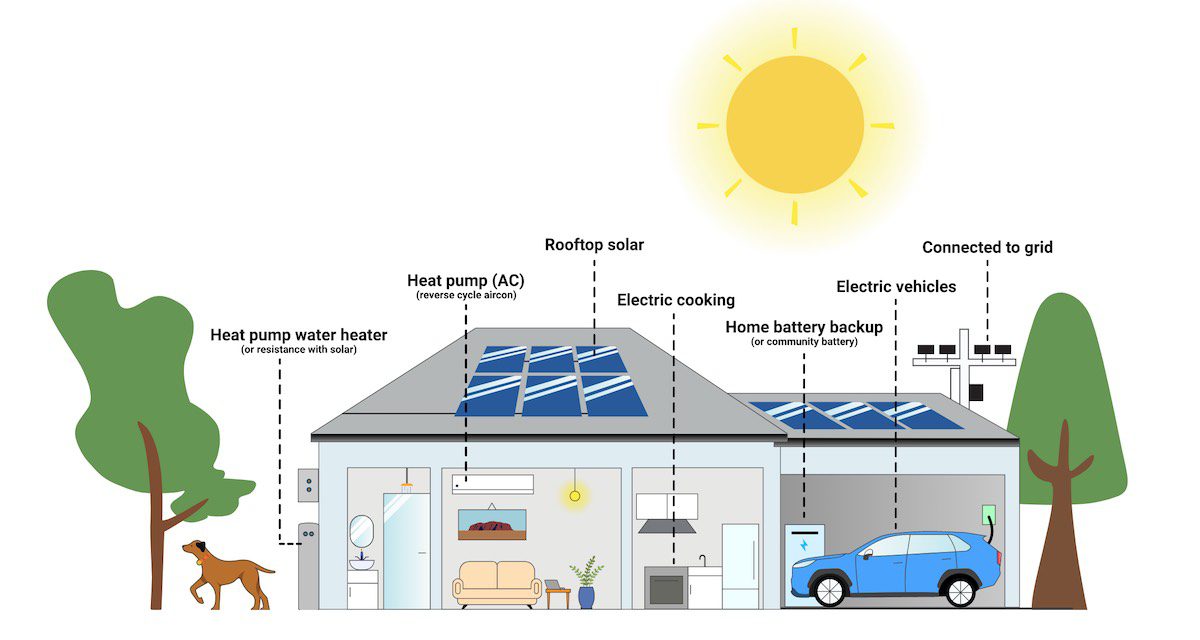
Griffith’s work shows that the total energy needed to power electrified homes is up to 64% less than fossil fuel powered homes which are woefully inefficient.
And the cost savings are even higher at around 80%. Griffith says that the average household can save over $5000 per year from their combined fossil fuel bills by going completely electric.
Griffith says that if Australia spent just $12 billion subsidising electrified appliances, it would kickstart accelerated electrification which would generate over $300 billion in household savings by 2035.
That’s enough household savings to buy almost 7 nuclear submarines.
Investing $48 billion (four times Griffith’s figure of $12 billion) into household electrification subsidies would tip the scales even faster enabling households to get off gas sooner.
Like petrol and diesel car pollution, the toxic fumes from burning gas stoves indoors has shocking health impacts that are only now being realised. Like electrifying transport, getting gas out of Australian homes will also result in a massive reduction in public health costs.
So we’ve now spent $220 billion completely electrifying the nation’s vehicle fleet and $48 billion electrifying our homes and the total cost is still $100 billion less than the price of 8 nuclear submarines.
The transmission infrastructure for the build out of large scale wind and solar is likely to cost less than $80 billion ($20 billion from the government infrastructure fund).
That in turn would unlock potentially $200 billion in new wind, solar, storage and green hydrogen and green metals investments that would turn Australian into a renewable superpower.
Much of the remainder could be used for high-speed rail network, infrastructure to make our cities safer for biking and pedestrians as well as protecting and re-wilding our magnificent forests which are critical carbon sinks.
Mobilising the nation for the war on CO2
Business and industry strategist Paul Gilding, who also featured in the Home Front documentary says: “Any rational response to the scientific evidence would suggest that we should mobilise today with the utmost urgency to transform the economy inside a decade.”
“This is no longer a long-term issue. There is no doubt we can respond and we can do things that we can’t imagine today, but the level of response we then need gets more and more dramatic every day. It’s going to be a super national mobilisation, like nothing we have done in history.” said Gilding.
“It’s bigger than World War Two.”
“The only issue is acceleration, acceleration of the response. So it’s all about speed. As we approach tipping points as we approach the potential for collapse, then the speed with which we respond is going to be the defining issue in our success.” he said.
“Scale and speed is the only game in town in terms of stopping climate Change.”

“Investing in fossil fuels, is like giving an AK47 to your most sworn enemy. Why would you do that? why would you build things that are only increasing the risk to national security? Absolutely nonsensical.” says former Major Michael Thomas.
Former deputy air force chief John Blackburn says “The first duty of government must be the safety and security of its citizens. Today, the government is failing to address the growing impacts of climate change and therefore failing to protect its own people.”
The message to Australia’s decision makers is clear. Climate change is the biggest threat to Australia’s national security and that threat must be met with an appropriate response.
The appropriate response is to immediately halt new coal, oil and gas and to mobilise a war scale effort with war scale funding to decarbonise our society.

